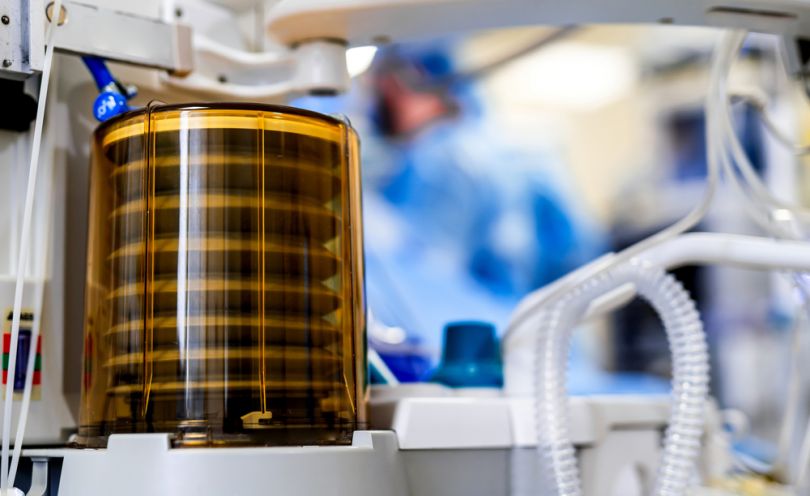Early this month, New York Governor Andrew Cuomo took an unprecedented step to help out the state’s COVID-19-beset healthcare systems: He effectively pooled their resources. Under his plan, the roughly 200 hospitals throughout the state — which has seen the world’s worst outbreak, by far — would share staff and equipment, with help and supplies going where they’re needed most, regardless of system affiliation, according to a Vox report.
It was the most dramatic example of the kind of resource coordination for which health experts have been clamoring. Even as hospital inventory management and communication technology has matured, deeply entrenched organizational barriers in healthcare and less-than-stellar adoption rates have slowed asset sharing.
“A pandemic is a really good time for cooperation.”
“Technically, none of this is particularly difficult,” wrote a group of business administration and health experts this month in the Harvard Business Review. “The difficulty is getting hospital leadership to change their thinking. There is a time for competition and a time for cooperation. A pandemic is a really good time for cooperation.”
But without top-down operational changes like the one in New York, such cooperation is tough. The process of shipping equipment is “a nightmare of logistics,” according to Mert Iseri, CEO of SwipeSense, a manufacturer of RFID badges and tags that let hospitals track how often staff are washing or sanitizing their hands as they move through the premises, as well as the location and usage of medical equipment.
“There is no global system that allows this kind of transfer to happen from health system to health system, let alone from state to state,” Iseri said. “That’s actually a very, very difficult industry-wide challenge that requires a whole lot more infrastructure than what is currently available.”

IoT tech can track increasingly scarce ventilators
It’s even more difficult when hospitals lack sophisticated tracking technology. A barcode-based system lets a hospital know, say, the number of on-hand beds, but it might not tell staff where, exactly, on premises those beds are positioned, as SwipeSense’s real-time, Bluetooth-enabled system does.
To assist in the challenge, SwipeSense has distributed free asset-tracking tags to its hospital partners. Right now, seven hospitals are using the tags to track ventilators. In addition to numbers and locations, the tags also track usage, so hospitals know quickly if they’re running low on vital equipment, or if they have a surplus that could be redistributed. And it helps staff know what equipment has come into contact with infected patients.
The industry of hospital asset tracking has shot up in recent years; the global market is expected to generate more than $53 billion by 2025, according to Zion Market Research analysis. And yet, some systems currently implemented are notably limited, according to Iseri. Only 20 percent of hospitals use a system that has geographical location monitoring tied directly into the devices, he said.
“If you don’t have that infrastructure in place, it’s very, very difficult to put in place while the crisis is ongoing,” Iseri said.
He’s not the only one to sound the warning signal on hospital infrastructure and champion IoT solutions. SwipeSense is one of nine companies from the RTLS and medical-device management field that was identified in a recent COVID-19 tech and services guide assembled by KLAS, an independent healthcare technology research firm. Wil Lukens, the CCO of CenTrak, one of the other eight companies included, has made a similar case.
“Planning for the worst-case scenario is essential for saving more lives,” Lukens told Inverse. “Unfortunately, we’re seeing what can happen without that sort of preparation in Italy today.”

Employee badges can support Contact Tracing efforts
Such RFID systems can play another important tracking role during the pandemic. Since hospitals are already tracking the locations of staff and equipment, they can use that data to determine whether an individual healthcare worker — or a hospital bed, say — has been in contact with a COVID-19-infected patient.
The challenge of contact tracing will be central to answering the question of when — and to what extent — the national economy can reopen. As Apple and Google rush to develop wide-scale contact tracing capabilities through their mobile operating systems, governments, health organizations and both tech companies are together wrestling with key privacy and trust concerns.
But even though hospitals can largely sidestep those challenges, facilities that lack real-time locating systems (RTLS) will still have a harder time effectively monitoring contact. A non-manual method like electronic medical record-keeping is a step above the old pen-and-paper ways, but it, too, leaves room for improvement in terms of thoroughness and scalability.
All of this happens as healthcare workers are putting themselves repeatedly in harm’s way to care for patients. A recent Buzzfeed News analysis found at least 5,400 healthcare professionals have been infected by the novel coronavirus, adding that the real figure is almost certainly much higher. The infection ratio is staggering in two states in particular: Healthcare workers reportedly constitute more than one out of every five confirmed cases in Ohio and New Hampshire.
“A healthcare worker today is no different than a firefighter running into a burning building,” Iseri said. “But at least a firefighter knows when the fire is out. This is like a fire that’s been smoldering for the past three weeks and is going to smolder for the next two months.”
The pandemic has touched the RFID/RTLS healthcare industry in another obvious way. COVID-19 has been the best — and worst — promotion imaginable for a tech solution that makes sure people wash their hands. It’s easy to envision a future in which hospitality, manufacturing or any number of industries outside of healthcare will turn toward more advanced ways of tracking hand-hygiene compliance. But Iseri, for one, is staying focused on healthcare for the foreseeable future.
“Today we’re 100 percent focused on this technology and in the healthcare industry,” he said.



